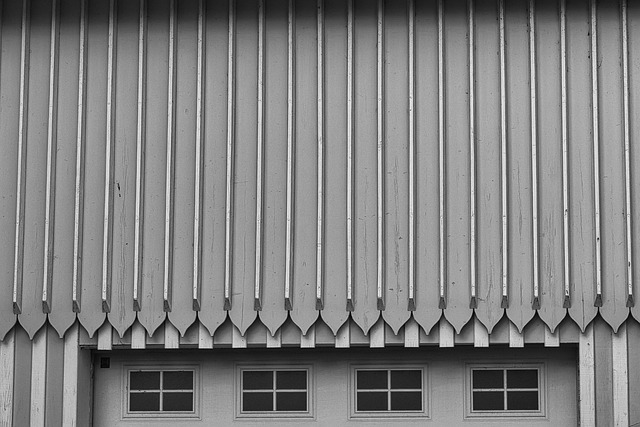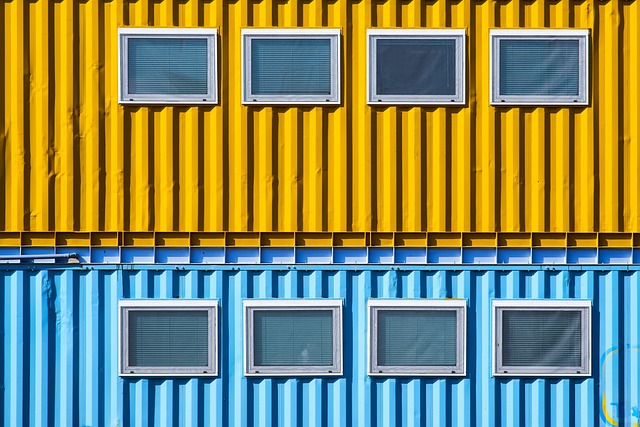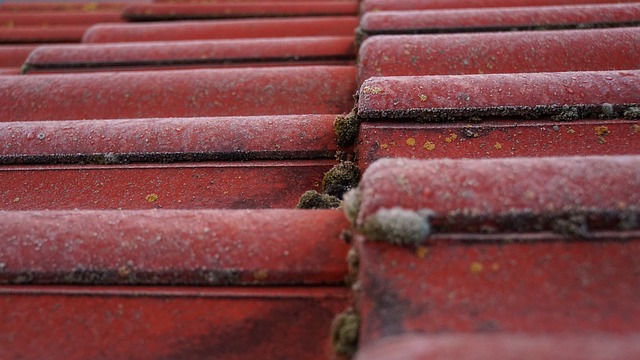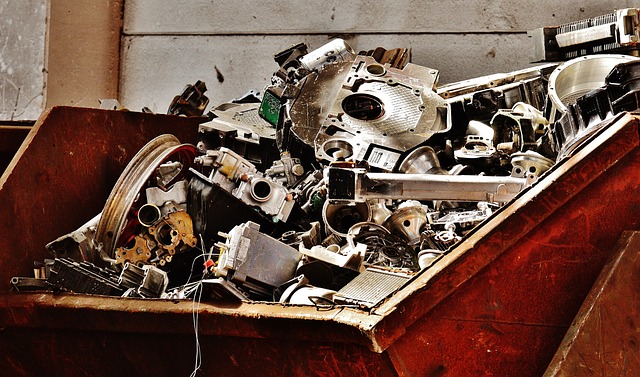Metal roofing is a sustainable and durable choice for both residential and commercial properties, offering exceptional longevity (up to 50 years or more) with warranties. Crafted from materials like aluminium, steel, or copper, each provides unique benefits related to weight, strength, corrosion resistance, and aesthetic appeal. Metal roofs reduce cooling costs by reflecting sunlight, making them cost-effective and eco-friendly. They also offer significant energy savings through superior heat reflection, mitigating the urban heat island effect. With proper care, metal roofs can last for several decades, reducing maintenance needs and waste. Recycling is integrated into their production and end-of-life processes, aligning with sustainability efforts. Metal roofing systems are versatile, durable, low-maintenance, and aesthetically pleasing, making them a smart choice that enhances curb appeal while promoting environmental stewardship. While initial installation costs may be higher, the long-term savings in energy efficiency and reduced replacement frequency make metal roofing a financially prudent option. Future advancements aim to further improve sustainability, technology, and integration with modern architectural designs.
“Sustainable metal roofing systems are transforming the way we think about both aesthetics and environmental impact. This comprehensive guide explores the multifaceted benefits of adopting metal roofing, from its exceptional durability and energy efficiency to its significant role in promoting environmental sustainability. We delve into various aspects, including materials, longevity, recycling practices, and modern designs. Additionally, we discuss installation, costs, and emerging trends, providing a thorough understanding of why metal roofing is a smart choice for eco-conscious homeowners.”
Understanding Metal Roofing: Materials and Durability

Metal roofing has emerged as a popular and sustainable choice for many homeowners and commercial property owners alike. It’s no surprise, given its exceptional durability and low maintenance requirements. Metal roofs are crafted from high-quality materials like aluminium, steel, or copper, each offering unique benefits. Aluminium, for instance, is lightweight yet robust, making it ideal for areas prone to severe weather conditions. Steel roofing, known for its strength and longevity, can withstand heavy loads and extreme temperatures. Copper, a luxurious option, not only adds aesthetic appeal but also provides excellent resistance to corrosion.
The durability of metal roofing systems is unparalleled, often boasting warranties extending up to 50 years or more. This longevity ensures that property owners can enjoy their investment for decades, reducing the need for frequent repairs and replacements. Moreover, metal roofs are highly reflective, which can significantly lower cooling costs during hot summers by reflecting sunlight instead of absorbing it like traditional roofing materials do.
The Environmental Benefits of Sustainable Metal Roofs

Sustainable metal roofs offer a range of environmental benefits that make them an eco-friendly choice for homeowners and businesses alike. One of the key advantages is their longevity; unlike traditional materials that require frequent replacement, metal roofing systems can last for decades with proper maintenance. This reduces waste and minimizes the demand for new materials, which often involves energy-intensive manufacturing processes.
Additionally, many sustainable metal roofs are designed with recycling in mind, using recycled content to lower the overall environmental impact of production. They also provide excellent protection against weather conditions, leading to reduced energy consumption inside buildings—a benefit known as the “cool roof” effect due to their ability to reflect sunlight and absorb less heat. This efficiency translates into significant savings on energy bills and a smaller carbon footprint over time.
Energy Efficiency: How Metal Roofing Contributes

Metal roofing systems are a smart choice for homeowners looking to enhance their property’s energy efficiency. This durable and long-lasting material plays a significant role in reducing energy consumption and lowering utility bills. One of its key advantages is its excellent heat reflection, which works like a shield on your roof. Instead of absorbing the sun’s heat, metal roofs reflect it, keeping your home cooler during warm seasons.
This simple yet powerful feature is especially beneficial in regions with hot climates, where air conditioning can consume a substantial amount of energy. By choosing metal roofing, folks can enjoy a more comfortable indoor temperature while actively contributing to a greener environment. Its high reflectivity also reduces the urban heat island effect, making cities cooler and more sustainable.
Longevity and Low Maintenance: A Comprehensive Look

Metal roofing systems are renowned for their exceptional longevity, offering durability that far surpasses many other roofing materials. This durability translates into a significantly lower risk of frequent repairs or replacements, saving homeowners substantial costs over time. With proper installation and maintenance, metal roofs can last for decades, making them a highly economical choice in the long run.
The low-maintenance nature of metal roofing is another significant advantage. Unlike traditional shingles that require regular cleaning and repair, metal roofs are resistant to rot, mold, and mildew, eliminating these common maintenance headaches. A simple periodic cleaning with mild soap and water is often all that’s needed to keep a metal roof in pristine condition, ensuring its structural integrity and aesthetic appeal for years to come.
Recycling and Metal Roofing: Closing the Loop

Recycling plays a pivotal role in the sustainability narrative of metal roofing systems. By embracing recycled materials, manufacturers close the loop on a product that often lasts for decades—if not centuries—on residential and commercial buildings. This process significantly reduces the environmental impact associated with extracting and processing new metals.
Metal roofing itself offers numerous eco-friendly advantages. Its longevity means fewer replacements over time, lessening the demand for raw materials. Moreover, metal roofs can be recycled at the end of their useful life, ensuring that even after serving multiple generations, they return to beneficial use. This closed-loop system is a cornerstone of sustainable building practices and aligns with the growing global push towards circular economy models.
Esthetic Appeal: Modern Designs for Eco-Conscious Homes

In today’s eco-conscious world, metal roofing systems are not just functional; they’re also a stylish choice for homeowners seeking to blend sustainability with aesthetic appeal. Modern designs in metal roofing offer a far cry from the traditional, industrial look of yesteryear. Today, metal roofs come in various colors and finishes, allowing them to complement or contrast with the natural landscape, architectural style, and color palette of eco-friendly homes. From subtle, earthy tones that blend into the surroundings to bold, vibrant shades that make a statement, these roofing options cater to diverse tastes while promoting environmental stewardship.
The beauty of metal roofing lies in its versatility, durability, and low maintenance requirements—all qualities that align with the principles of sustainability. By choosing modern metal roofing designs, homeowners not only enhance the curb appeal of their properties but also contribute positively to the planet’s health. This is especially true when considering the longevity of these roofs, which can outlast traditional materials, reducing waste and the need for frequent replacements.
Installation and Cost Considerations

When considering a sustainable metal roofing system, installation and cost are key factors. Metal roofs often require specialized installation methods, which can impact both time and expense. However, the longevity and durability of metal offer long-term savings. Initial costs for materials can be higher compared to traditional shingles, but the resistance to wear and tear, as well as the potential for reduced maintenance over time, make metal roofing a financially sensible choice in many cases.
The installation process may involve additional steps like proper flashing, sealing, and ventilation to ensure optimal performance. Skilled roofers with experience in metal work are essential for a successful install. While the upfront investment can be significant, sustainable metal roofing systems offer a competitive price point when considering their energy-efficient properties and reduced need for frequent replacements.
Future Trends in Metal Roofing Systems

The future of metal roofing systems looks bright and eco-friendly. With a growing emphasis on sustainability, manufacturers are exploring innovative ways to reduce the environmental impact of metal roofing while maintaining its durability and aesthetic appeal. One trend is the development of recycled content metal roofs, where post-consumer materials are incorporated into the manufacturing process, reducing the demand for new resources. Additionally, advanced coating technologies are allowing metal roofs to reflect more sunlight, thereby lowering cooling costs and contributing to energy efficiency.
Smart connectivity and integration with building automation systems are also expected to rise. These systems can monitor roof performance, detect leaks early, and optimize energy usage. As technology advances, we can anticipate even longer-lasting, low-maintenance metal roofing solutions that seamlessly blend with modern architectural designs. This evolution promises to enhance the overall value of homes while promoting a greener environment.
